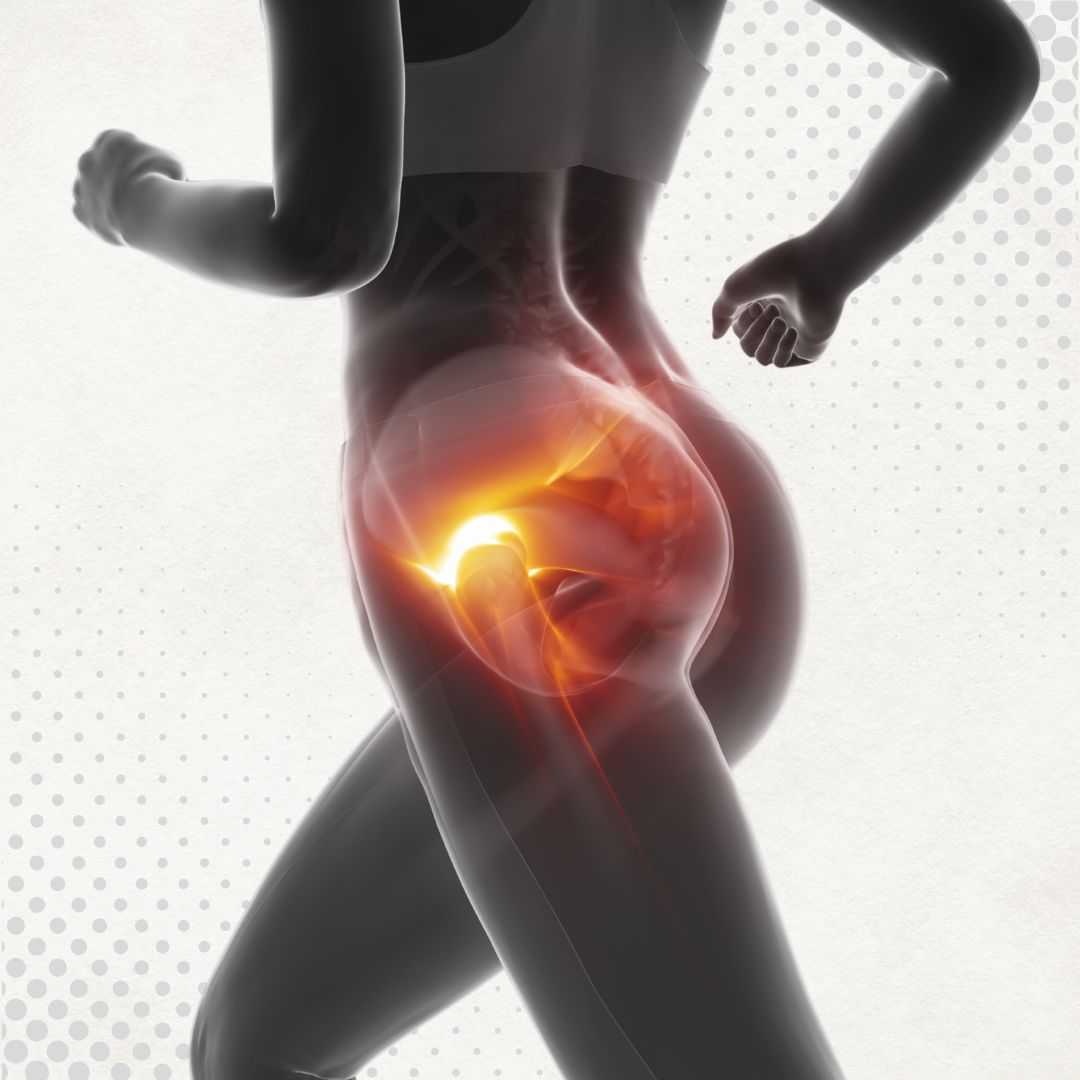.png)
Living with the chronic pain of a bulging or herniated disc can be debilitating, affecting every aspect of your life, from work to simple daily activities. The shooting pain down your leg (sciatica), numbness, or weakness often stems from a spinal disc pressing on a nerve. For years, the primary treatment options were conservative care like physical therapy, pain-masking epidural steroid injections, or invasive procedures like microdiscectomy or spinal fusion. While these can be effective for some, they don't address the root cause: the degenerated, damaged disc itself. This is where a groundbreaking field of medicine offers new possibilities.
Stem cell therapy for herniated discs represents a significant shift in how we approach spinal conditions. Instead of just managing symptoms or surgically removing the problem tissue, this regenerative approach aims to heal the disc from the inside out. It leverages the most powerful healing agents known to science—your own stem cells—to rebuild damaged tissue, calm inflammation, and provide lasting pain relief. This innovative, minimally invasive treatment is giving hope to countless individuals who are seeking an effective alternative to back surgery and want to reclaim an active, pain-free life.
We know you have many questions about this cutting-edge therapy. How does it work? Is it safe? Am I a candidate? What does it cost? In this comprehensive guide, we will answer all the most pressing questions people ask about using stem cell therapy for back pain caused by disc issues. Our goal is to provide you with clear, accurate, and expert-driven information so you can make an empowered decision about your spinal health and explore the future of healing.
What is stem cell therapy for a bulging or herniated disc?
At its core, this therapy is a form of regenerative medicine. Spinal discs have a very poor blood supply, which is why they don't heal well on their own once injured or degenerated. The treatment bypasses this limitation by delivering a potent dose of repair cells directly to the source of the problem. These stem cells are "undifferentiated," meaning they can transform into the specialized cells needed to repair the disc's tough outer wall (annulus fibrosus) and its gel-like center (nucleus pulposus).
By promoting the regeneration of this tissue, the therapy can help the disc regain some of its height and structure, effectively pulling the bulge or herniation away from the compressed nerve root. It’s a strategy focused on true biological repair, rather than simply cutting away tissue or fusing the spine.
How does stem cell therapy work to heal a spinal disc?
The healing mechanism of stem cell therapy for back pain is a sophisticated, multi-step process. Once injected into the damaged disc, the stem cells perform several critical functions:
- Potent Anti-Inflammatory Action: The most immediate effect is a powerful reduction in inflammation. Stem cells release proteins that calm the chemical irritation of the nerve roots, which is a major source of sciatica and back pain.
- Tissue Regeneration: The stem cells can differentiate into chondrocyte-like cells, which are the building blocks of disc cartilage. This helps repair tears in the disc's outer wall and rebuild its inner core.
- Cell Signaling: They act as "conductors" of the healing orchestra, releasing growth factors that signal your body’s own nearby cells to migrate to the injury site and participate in the repair.
- Improved Hydration: By helping to rebuild the disc's structure, the therapy can improve its ability to hold water, which is essential for its function as a shock absorber.
Can stem cells actually repair a herniated disc?
While the term "repair" might suggest a complete return to a pristine, undamaged state, the clinical goal is functional repair that resolves symptoms. MRI studies before and after treatment have shown visible evidence of disc repair, including reduced herniation size and improved hydration signals. The focus is on healing the tears in the annulus fibrosus, which stops the leakage of inflammatory material and allows the disc to retract from the nerve.
It's important to set realistic expectations. The degree of repair depends on the severity of the degeneration. For many patients, the result is a durable, long-term resolution of pain and a return to activities that were previously impossible, effectively providing a biological fix for the underlying problem.
Who is an ideal candidate for disc stem cell therapy?
This treatment is particularly effective for individuals with mild to moderate degenerative disc disease. You may be a strong candidate if:
- You have an MRI that shows a contained disc bulge or a small to moderate herniation.
- Your pain has persisted for more than three months and has not responded well to physical therapy, chiropractic care, or medications.
- You've had temporary relief from epidural steroid injections but are seeking a longer-lasting, more corrective solution.
- You are not a candidate for, or wish to avoid, major surgery like a discectomy or spinal fusion.
Patients with severe conditions like spinal instability, significant spinal stenosis, or complete collapse of the disc space may be less suitable candidates. A thorough evaluation by a regenerative medicine physician is necessary to determine eligibility.
What is the success rate of stem cell therapy for herniated discs?
The success of the procedure is measured by tangible outcomes: reduced pain scores, increased mobility, and a decreased need for pain medication. Many patients report being able to stand longer, walk farther, and return to hobbies and sports they had given up. The results are not instantaneous; the healing process is gradual, with most patients noticing initial improvements within the first month and continuing to see benefits for up to a year as the tissue regenerates.
Factors that influence success include the patient's overall health, the specific level and severity of the disc issue, and strict adherence to post-procedure protocols, which typically involve a period of rest followed by targeted physical therapy.
What is the procedure for a stem cell injection for a herniated disc?
The entire process is performed under sterile conditions in a procedure suite and typically takes about 1-2 hours. Here is a breakdown of the steps:
- Harvest: The doctor numbs an area, usually the back of your hip, and extracts a small sample of bone marrow or fat. This is the source of your powerful Mesenchymal Stem Cells (MSCs).
- Concentration: The sample is processed in a centrifuge to isolate and concentrate the stem cells and growth factors into a small, potent injectate.
- Injection: You will lie on your stomach, and the doctor will use live X-ray imaging to guide a needle with extreme precision into the exact location of your bulging or herniated disc. The stem cell concentrate is then slowly injected to begin the healing process.
Is the stem cell procedure for back pain painful?
Most patients describe the discomfort as manageable. The injection into the disc can cause a temporary increase in pressure and back pain, which is a sign that the therapeutic cells have reached their target. This soreness, often described as a deep ache, typically resolves within 3 to 7 days.
This temporary inflammatory response is a crucial part of the healing cascade. Your physician will provide a post-procedure care plan to manage this discomfort, which usually involves rest and over-the-counter pain relievers, but avoiding anti-inflammatory drugs (NSAIDs) that can interfere with the healing process.
How much does stem cell therapy for a herniated disc cost?
The cost of stem cell therapy for back pain can vary significantly. It is an investment in your long-term health, and it's essential to understand what the price includes. High-quality clinics use advanced guidance technology and sophisticated cell processing, which is factored into the cost.
| Treatment Factor | Typical Cost Range (USD) | Notes |
|---|---|---|
| Single-Level Disc Treatment (BMAC) | $5,000 - $9,000 | Bone Marrow Aspirate Concentrate is the most studied source for disc repair. |
| Single-Level Disc Treatment (Adipose) | $6,000 - $12,000 | Fat-derived stem cells are more plentiful but require more processing. |
| Each Additional Spinal Level | +$1,500 - $3,000 | Treating multiple discs (e.g., L4-L5 and L5-S1) increases the cost. |
| International Clinic Options | $4,000 - $10,000 | Requires diligent research on clinic standards, but can be a more affordable option. |
When weighing the cost, consider the alternative: the ongoing expense of medications, repeated steroid injections, insurance deductibles for surgery, and potential loss of income from extended recovery times.
What are the benefits of stem cell therapy over spine surgery?
Choosing an alternative to back surgery, like stem cell therapy, offers significant advantages:
- Tissue Preservation: Surgery (discectomy) removes disc material, which can accelerate degeneration at that level and adjacent levels. Stem cell therapy aims to preserve and restore your natural anatomy.
- Avoidance of Fusion: Spinal fusion eliminates motion at a spinal segment, which transfers stress to the discs above and below, often leading to future problems (adjacent segment disease). Stem cell therapy maintains normal spinal biomechanics.
- Minimal Downtime: You can return to light activity within a few days. Surgical recovery can take months and often involves significant pain and rehabilitation.
- Lower Risk Profile: It avoids the risks of general anesthesia, surgical infection, nerve damage, and failed back surgery syndrome, which can leave patients in more pain than before.
Ready to Explore a Surgical Alternative?
If you're struggling with a bulging or herniated disc and want to learn more about a regenerative solution, PlacidWay is your trusted partner. We connect you with world-class specialists and accredited clinics offering advanced stem cell therapies. Take the first step toward lasting pain relief.
Stem Cell Therapy Abroad










Share this listing